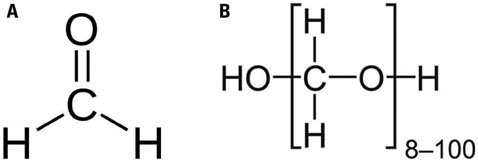Yonsei Med J.
2017 Jan;58(1):252-254. 10.3349/ymj.2017.58.1.252.
A Case of Recurrent Urticaria Due to Formaldehyde Release from Root-Canal Disinfectant
- Affiliations
-
- 1Department of Internal Medicine, Inje University Haeundae Paik Hospital, Busan, Korea. chansun@paik.ac.kr
- 2Department of Internal Medicine, Inje University Ilsan Paik Hospital, Ilsan, Korea.
- KMID: 2374214
- DOI: http://doi.org/10.3349/ymj.2017.58.1.252
Abstract
- Although formaldehyde is well known to cause type 4 hypersensitivity, immunoglobulin E (IgE)-mediated hypersensitivity to formaldehyde is rare. Here, we report a case of recurrent generalized urticaria after endodontic treatment using a para-formaldehyde (PFA)-containing root canal sealant and present a review of previous studies describing cases of immediate hypersensitivity reactions to formaldehyde. A 50-year-old man visited our allergy clinic for recurrent generalized urticaria several hours after endodontic treatment. Prick tests to latex, lidocaine, and formaldehyde showed negative reactions. However, swelling and redness at the prick site continued for several days. The level of formaldehyde-specific IgE was high (class 4). Thus, the patient was deemed to have experienced an IgE-mediated hypersensitivity reaction caused by the PFA used in the root canal disinfectant. Accordingly, we suggest that physicians should pay attention to type I hypersensitivity reactions to root canal disinfectants, even if the symptoms occur several hours after exposure.
Keyword
MeSH Terms
-
Disinfectants/*adverse effects
Formaldehyde/*adverse effects
Humans
Hypersensitivity, Immediate/*chemically induced
Immunoglobulin E/*immunology
Male
Middle Aged
Recurrence
Skin Tests
Time Factors
Urticaria/*chemically induced/diagnosis
Zinc Oxide-Eugenol Cement/*chemistry
Disinfectants
Formaldehyde
Immunoglobulin E
Zinc Oxide-Eugenol Cement
Figure
Reference
-
1. Rietschel RL, Fowler JF. Fisher’s contact dermatitis. 4th ed. Baltimore, MD: Williams and Wilkins;1995.2. Johansen JD, Peter JF, Jean PL. Contact dermatitis. 5th ed. New York: Springer-Verlag Berlin Heidelberg;2011.3. Kunisada M, Adachi A, Asano H, Horikawa T. Anaphylaxis due to formaldehyde released from root-canal disinfectant. Contact Dermatitis. 2002; 47:215–218.
Article4. Fehr B, Huwyler T, Wüthrich B. [Formaldehyde and paraformaldehyde allergy. Allergic reactions to formaldehyde and paraformaldehyde after tooth root treatments]. Schweiz Monatsschr Zahnmed. 1992; 102:94–97.5. Braun JJ, Zana H, Purohit A, Valfrey J, Scherer P, Haïkel Y, et al. Anaphylactic reactions to formaldehyde in root canal sealant after endodontic treatment: four cases of anaphylactic shock and three of generalized urticaria. Allergy. 2003; 58:1210–1215.
Article6. Bousquet J, Rivory JP, Maurice F, Skassa-Brociek W, Larrson P, Johansson SG, et al. Allergy in chronic haemodialysis. 1. Double-blind intravenous challenge with formaldehyde. Clin Allergy. 1987; 17:499–506.
Article7. Kramps JA, Peltenburg LT, Kerklaan PR, Spieksma FT, Valentijn RM, Dijkman JH. Measurement of specific IgE antibodies in individuals exposed to formaldehyde. Clin Exp Allergy. 1989; 19:509–514.
Article8. Al-Nashi YG, Al-Rubayi AA. A case of sensitivity to tricresol formalin. Br Dent J. 1977; 142:52.
Article9. Ebner H, Kraft D. Formaldehyde-induced anaphylaxis after dental treatment? Contact Dermatitis. 1991; 24:307–309.10. Wantke F, Hemmer W, Haglmüller T, Götz M, Jarisch R. Anaphylaxis after dental treatment with a formaldehyde-containing tooth-filling material. Allergy. 1995; 50:274–276.
Article11. el Sayed F, Seite-Bellezza D, Sans B, Bayle-Lebey P, Marguery MC, Bazex J. Contact urticaria from formaldehyde in a root-canal dental paste. Contact Dermatitis. 1995; 33:353.
Article12. Sayama S, Tanabe H, Kizaki J. A case of anaphylactic shock caused by dental paste for root canal. Jpn J Clin Dermatol. 1996; 50:1067–1069.13. Wedendal PA. [Case of allergic shock in root canal therapy with tricresol formalin]. Sven Tandlak Tidskr. 1954; 47:319–321.14. Molina C, Passemard N, Godefroid JM. [Hypersensitivity to formol and odonto-stomatology]. Rev Fr Allergol. 1971; 11:11–18.15. Ito M, Sai M, Handa Y. Allergic reaction to formaldehyde contained in formocresol. J Dent Med. 1988; 28:897–904.16. Gensau A, Pirkhammer D, Aberer W. Anaphylaxie durch parafomaldehydehaltige Dentalmaterialen. Allergologie. 1994; 9:439–441.17. Modre B, Kränke B. Anaphylactic reaction to formaldehyde. Allergy. 2001; 56:263–264.
Article18. Wemes JC, Purdell-Lewis D, Jongebloed W, Vaalburg W. Diffusion of carbon-14-labeled formocresol and glutaraldehyde in tooth structures. Oral Surg Oral Med Oral Pathol. 1982; 54:341–346.
Article19. Nagai H, Matsuo A, Hiyama H, Inagaki N, Kawada K. Immunoglobulin E production in mice by means of contact sensitization with a simple chemical, hapten. J Allergy Clin Immunol. 1997; 100(6 Pt 2):S39–S44.
Article20. Maurice F, Rivory JP, Larsson PH, Johansson SG, Bousquet J. Anaphylactic shock caused by formaldehyde in a patient undergoing long-term hemodialysis. J Allergy Clin Immunol. 1986; 77:594–597.
Article
- Full Text Links
- Actions
-
Cited
- CITED
-
- Close
- Share
- Similar articles
-
- Contact urticaria to bisphenol-A-Diglycidylether dental resin
- Diagnosis and treatment of maxillary molar with abnormality
- The sustaining effect of three polymers on the release of chlorhexidine from a controlled release drug device for root canal disinfection
- Root canal treatment of a mandibular second premolar with three separate root canals
- A Study of Root Canals Morphology in Primary Molars using Computerized Tomography


